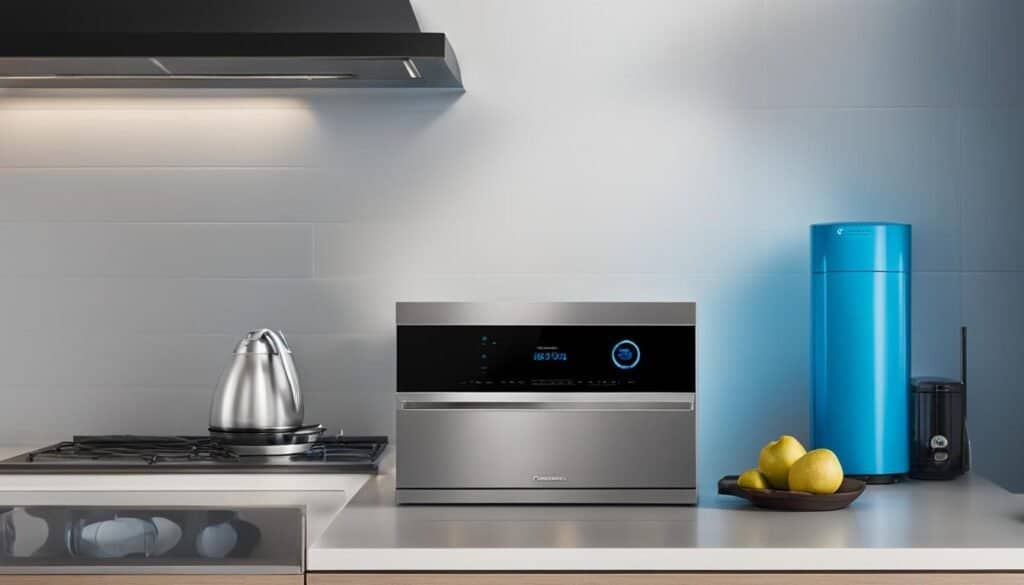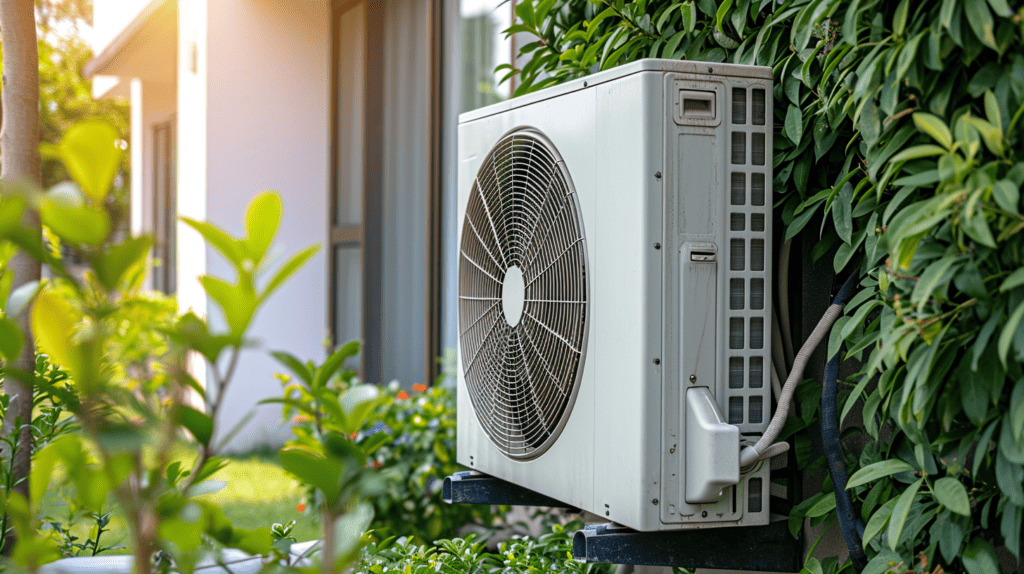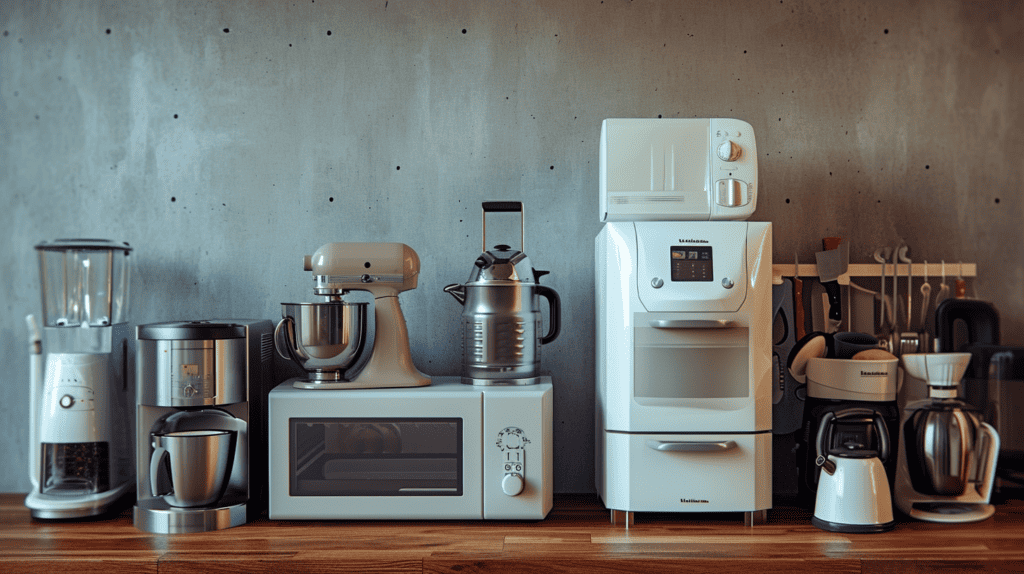As a conscious homeowner, I’ve discovered that small energy-saving habits for everyday life can make a significant impact on both my energy bills and the environment. By incorporating smart habits into my daily routine, I can contribute to combating climate change while also reaping the economic benefits.
Heating, hot water, and electricity account for the majority of energy consumption in a typical household. Simple strategies like insulation, smart thermostats, energy-efficient appliances, and mindful usage can lead to a noticeable reduction in energy waste and expenditure. Embracing these practices helps address larger issues such as energy conservation and the transition towards clean and renewable energy sources.
Key Takeaways
- Energy efficiency can help save money, reduce energy consumption, and lower energy bills.
- Proper home insulation is crucial for maintaining optimal temperatures and conserving energy.
- Smart thermostats offer automated solutions for maintaining comfortable climates while reducing energy usage.
- Energy-efficient appliances, marked by the ENERGY STAR logo, save energy and money in the long run.
- Optimizing appliance use and performing routine maintenance contribute to increased energy efficiency and savings.
- Eliminating standby energy waste, or “vampire power,” can lead to significant reductions in electricity consumption.
- Adopting energy-saving habits in everyday life supports a healthier planet and a more sustainable future for all.
27 Energy-Saving Habits To Implement Now
Here’s a list of 27 energy-saving habits for everyday life, along with relevant information for each:
- Turn Off Lights When Not in Use
- Leaving lights on when not needed can waste a significant amount of energy. Turning off lights can save up to 10% on your energy bill.
- Use LED Bulbs
- LED bulbs use at least 75% less energy than incandescent lighting. On average, this switch can save about $75 in energy costs per year.
- Unplug Devices When Not in Use
- Electronics still draw power when they’re off but plugged in. Unplugging can save up to $100 a year.
- Use Natural Light
- Maximizing natural light can reduce the need for artificial lighting. This approach can reduce lighting energy use by up to 40%.
- Install a Programmable Thermostat
- This can save about 10% per year on heating and cooling by automatically adjusting the temperature.
- Reduce Water Heater Temperature
- Lowering the temperature to 120 degrees Fahrenheit can save up to 5% in energy costs.
- Use Energy-Efficient Appliances
- They use 10-50% less energy and water than standard models, potentially saving $50 or more per year.
- Air Dry Clothes
- Skipping the dryer can save approximately $0.50 per load.
- Seal Windows and Doors
- This can prevent heat loss and could lead to a 20% savings on heating and cooling costs.
- Opt for Shorter Showers
- Reducing shower time can save nearly 1,000 gallons of water annually, translating to energy savings.
- Wash Clothes in Cold Water
- This can save up to 90% of the energy used to heat water in a washing machine.
- Use a Microwave or Toaster Oven
- These appliances use 50-70% less energy than a conventional oven.
- Maintain Your HVAC System
- Regular maintenance can improve efficiency and reduce energy costs by up to 15%.
- Insulate Your Home
- Proper insulation can save up to 20% on heating and cooling costs.
- Use Smart Power Strips
- Smart power strips can eliminate phantom loads, potentially saving up to $200 a year.
- Adjust Your Fridge and Freezer Temperature
- Setting your fridge to 38°F and freezer to 5°F is optimal for energy saving.
- Plant Trees for Shade
- Trees can reduce cooling costs by up to 25%.
- Use a Laptop Instead of a Desktop
- Laptops typically use up to 80% less electricity.
- Take Advantage of Off-Peak Rates
- Using appliances during off-peak hours can save on electricity bills.
- Install Solar Panels
- This can significantly reduce electricity bills and reliance on non-renewable energy.
- Drive Less
- Walking, biking, or using public transport can reduce fuel costs and emissions.
- Maintain Your Vehicle
- Regular maintenance improves fuel efficiency.
- Use a Pressure Cooker
- They use 50-75% less energy than a pot on the stove.
- Replace Furnace Filters Regularly
- Clean filters improve efficiency and save energy.
- Use Ceiling Fans
- They use less electricity than air conditioners and can reduce cooling costs by 40%.
- Optimize Computer Settings
- Using sleep mode and reducing brightness can save energy.
- Invest in Energy-Efficient Windows
- They can reduce energy loss by up to 30%.
Each of these habits, when implemented, not only contributes to energy savings but also aids in the reduction of carbon footprint, promoting a more sustainable lifestyle.
Home Insulation and Energy Efficiency
Proper home insulation is a cornerstone of energy efficiency, impacting the overall comfort and energy consumption of a property. A well-insulated house can prevent over a third of its heat from escaping, substantially lowering energy bills by retaining desired temperatures. In this section, we will explore the benefits of proper insulation, choosing the right materials for thermal regulation, and the advantages of installing metal-insulated wall panels for both aesthetics and functionality.
Understanding the Benefits of Proper Insulation
A well-insulated home enjoys several benefits, such as improved energy efficiency, increased thermal regulation, and lowered energy bills. Insulation helps to reduce heat flow between the indoors and outdoors, keeping your home warm in winter and cool in summer.
By investing in better home insulation, I have significantly reduced my energy consumption and saved money on my energy bill.
Choosing the Right Materials for Thermal Regulation
There are various materials available for insulation, each with its advantages and challenges. Some examples include fiberglass, cellulose, and foam insulation. To choose the right material, it’s crucial to consider factors such as climate, budget, and the specific area of the home that requires insulation.
Installing Metal-Insulated Wall Panels for Aesthetic and Functional Advantage
Metal-insulated wall panels have emerged as a popular solution for both their visual appeal and effective climate control. These panels come in various widths, providing a significant energy-saving advantage by reducing the energy needed to heat and cool a home. Moreover, metal-insulated panels offer easy installation, excellent durability, and low maintenance, making them an ideal choice for homeowners seeking energy-efficient insulation options.
| Type of Insulation | Pros | Cons |
|---|---|---|
| Fiberglass | Affordable, widely available, and easy to install. | May irritate skin and lungs, and requires careful handling during installation. |
| Cellulose | Made from recycled materials, good thermal performance, and eco-friendly. | Can be more expensive than fiberglass and may settle over time, reducing efficiency. |
| Foam Insulation | Excellent performance, ability to fill gaps, and reduces drafts. | Higher cost compared to other materials and may require professional installation. |
By insulating our homes with the right materials and techniques, we can significantly enhance their energy efficiency and comfort, while also reducing our energy bills and contributing to a more sustainable lifestyle.
Smart Climate Control
Modern smart thermostats have revolutionized the way households manage their temperatures, offering automatic adjustments to save energy when heating or cooling is not as crucial, such as during sleep hours. By utilizing these advanced devices, homeowners can optimize their HVAC systems, reduce energy consumption, and significantly cut down on annual energy costs. In this section, we will explore how adopting smart thermostats for automated energy savings and maximizing HVAC efficiency can lead to a more comfortable and eco-friendly home environment.
Adopting Smart Thermostats for Automated Energy Savings
Programmable thermostats provide users with a multitude of energy-saving tips and features. These smart devices offer a convenient way to effortlessly control a household’s climate while potentially saving an average of £200 (~$219) annually. In addition to allowing users to set temperature schedules, they may also include filter-change indicators and maintenance alerts. The integration of these easy-to-use thermostats translates into improved energy use and decreased operating costs across the home.
Maximizing HVAC Efficiency and Lowering Annual Heating and Cooling Costs
Effectively managing energy costs and consumption requires a well-maintained HVAC system. By regularly servicing and cleaning the system, homeowners can ensure optimal operation with minimal energy waste. A smart thermostat can further enhance the performance of the HVAC system by detecting variations in usage patterns and making automatic adjustments accordingly. This, in turn, leads to annual energy savings and the reduction of unnecessary energy expenditure, thereby promoting a greener and more sustainable living environment.
Energy-Efficient Appliances

Upgrading to energy-efficient appliances is a powerful way to enjoy long-term energy and cost savings. Modern appliances that are designed to minimize energy consumption have a notable impact on both the environment and household expenses. In this section, we will discuss the benefits of investing in these appliances, recognizing the ENERGY STAR certification, and the particular advantages of high-efficiency washers.
Investing in Modern Appliances for Long-Term Savings
Although energy-efficient appliances might have a higher initial cost, their lower operational expenses make them a wise investment in the long run. By reducing the energy required for everyday tasks, these appliances ultimately save energy and money while promoting an eco-friendly lifestyle. Consider this table showcasing the estimated annual energy costs of some common household appliances:
| Appliance Type | Standard Model Annual Energy Cost | Energy-Efficient Model Annual Energy Cost |
|---|---|---|
| Refrigerator | $80 | $54 |
| Dishwasher | $58 | $36 |
| Washing machine | $94 | $53 |
| Dryer | $120 | $85 |
Recognizing ENERGY STAR certifications for Increased Efficiency
The ENERGY STAR logo is a reliable indicator of an appliance’s energy efficiency. Products bearing this certification have met rigorous standards set by the U.S. Environmental Protection Agency (EPA) and the Department of Energy (DOE). By choosing ENERGY STAR-certified appliances, you can rest assured that you’re selecting products designed to minimize energy consumption and reduce environmental impact.
The Environmental and Economic Impact of High-Efficiency Washers
High-efficiency washers are a prime example of the advantages of energy-efficient appliances. These washing machines use significantly less water and energy per load compared to conventional models. By using a high-efficiency washer, you can save energy, money, and natural resources. Some of the benefits of these washers include:
- Reduced water usage: High-efficiency washers use 40-50% less water than traditional washers.
- Lower energy consumption: These washers require 40-60% less energy per load.
- Improved performance: Improved technology allows for better cleaning and faster cycle times.
- Longer-lasting clothes: Gentle washing action causes less wear and tear on your garments, extending their lifespan.
- Financial savings: Reduced water and energy usage equates to lower utility bills.
- Environmental benefits: Using less water and energy helps minimize the carbon footprint and conserves natural resources.
By opting for energy-efficient appliances, you can contribute to a healthier planet, save money in the long run, and enjoy greater convenience in your daily life.
Optimize Your Appliance Use

Optimizing how I use appliances involves simple yet impactful adjustments such as washing only full loads of dishes and clothes, using cold water for laundry, and keeping appliances clean to operate efficiently. By retaining heat when cooking, for example, by keeping the oven door closed and choosing not to leave the refrigerator door ajar for extended periods, I avoid unnecessary energy consumption. Automating appliances with smart assistants enables precise control and energy conservation even when I’m away.
To further demonstrate the potential energy savings, consider the following table that details the average kWh savings for each recommended practice:
| Energy-Saving Practice | Average kWh Savings |
|---|---|
| Washing full loads | 60 – 100 |
| Using cold water for laundry | 70 – 110 |
| Keeping oven door closed | 20 – 50 |
| Not leaving refrigerator door open | 30 – 60 |
| Automating appliances with smart assistants | 40 – 80 |
By making these changes, I can effectively optimize appliance use, save electricity, conserve energy, and boost the efficiency of the devices. With an increasing awareness of the importance of responsible energy usage and electricity consumption, these energy-saving practices form a crucial part of an eco-friendly, cost-saving household.
Routine Appliance Maintenance
To ensure our appliances stay energy-efficient and maximize their longevity, consistent maintenance and regular cleaning are vital. Carrying out these simple tasks can prevent the performance issues that arise from accumulated grime and debris while extending an appliance’s service life and conserving energy.
The Importance of Regular Cleaning in Energy Conservation
Regular cleaning contributes significantly to energy conservation and maintaining appliances’ energy-saving capabilities. For instance, removing lint from dryer filters boosts its efficiency, while defrosting freezers maintains low energy consumption. Likewise, keeping fridge coils dust-free extends the device’s lifespan and ensures optimal performance.
Extending Appliance Lifespan Through Proper Maintenance
Properly maintaining appliances not only ensures their energy-efficiency but also reduces electricity usage and extends their lifespan. Here are some critical aspects of appliance maintenance:
- Inspect seals: Check for worn-out sealing, gaskets, and weatherstripping in appliances such as refrigerators and ovens, which may lead to energy waste.
- Regularly service: Schedule regular maintenance for air conditioners and heating systems, including removing dust from filters or replacing them as needed.
- Check vents: Ensure dryer vents are free from blockages and lint to prevent decreased efficiency and potential fire hazards.
- Keep coils clean: Vacuum refrigerator and freezer coils to enable proper functioning and reduce energy consumption.
By strictly adhering to these maintenance measures, we can ensure optimal appliance efficiency, thereby greatly contributing towards energy conservation.
Eliminating Standby Energy Waste

Standby power, often referred to as vampire power, is the electricity that devices consume even when they are inactive or switched off. This energy waste can add up considerably in household energy consumption, with devices like laptops and phone chargers constantly drawing power. As a simple and effective solution for reducing phantom loads and reaping energy savings, I regularly unplug devices or use power strips with built-in switches. These small actions accumulate to a notable effect on energy conservation efforts.
The Hidden Costs of Vampire Power
Many people are oblivious to the hidden costs of vampire power that add to their energy bills. Although individual devices may consume modest amounts of standby power, the combined electrical consumption of numerous devices in a typical household can result in significant energy waste. In fact, standby energy waste accounts for approximately 10% of total home energy consumption, which translates to higher electricity bills and increased environmental impact.
Unplugging Devices as a Simple Solution to Reduce Phantom Loads
Fortunately, reducing phantom loads and conserving energy doesn’t require a drastic lifestyle change. By simply unplugging devices that are not in use or turning off power strips, I effectively minimize standby energy waste. This practice not only decreases electrical consumption but also contributes to long-term energy savings. To better illustrate the potential energy savings, consider the following table:
| Device | Standby Power Usage (Watts) | Annual Energy Use (kWh) | Annual Cost ($) |
|---|---|---|---|
| Laptop Charger | 4 | 35.04 | 4.20 |
| Desktop Computer | 21 | 183.96 | 22.08 |
| Television | 5 | 43.80 | 5.26 |
| Game Console | 10 | 87.60 | 10.51 |
| Cable Box | 25 | 219.00 | 26.28 |
Note: The table above assumes an average electricity cost of $0.12 per kilowatt-hour and devices on standby for 8,760 hours per year.
In conclusion, eliminating standby energy waste by unplugging devices or using power strips with integrated switches is an easy and effective way to reduce energy waste and promote energy savings. This proactive approach to managing electrical consumption contributes significantly to the conservation of precious resources and supports a more sustainable future.
Energy-Saving Habits for Everyday Life

Implementing energy-saving habits in our daily lives can have a great impact on reducing energy costs and conserving resources. Two key areas where simple changes can make a difference include laundry practices and lighting strategies.
Laundry Practices: Cold Water Usage and Air Drying Techniques
Laundry can be a significant energy sink in households, but adopting practices like using cold water for wash cycles and air drying clothes can substantially reduce energy consumption. Cold water washes save energy by reducing the need for heating water, while air drying avoids the energy-intensive process of using an electric dryer. In fact, air drying clothes can save around 4% on a typical household’s electricity bill.
Effective Lighting Strategies: Embracing Natural Light and LED Technology
When it comes to lighting efficiency, a few simple adjustments to our daily habits can help save energy at home. These include embracing natural light whenever possible – opening curtains to let in sunlight and warm the rooms passively. Additionally, switching to energy-efficient LED bulbs can significantly lower energy costs, as they consume 25-80% less energy than traditional incandescent bulbs and have a longer lifespan.
Leveraging the power of the sun and adopting LED technology can both contribute to a greener and more cost-effective home environment.
Efficient lighting strategies involve not only the type of bulbs used but also turning off lights when they’re unnecessary. To further enhance lighting efficiency, consider the following:
- Install dimmer switches to control light intensity and conserve energy
- Use motion sensor lights for outdoor areas and less frequented spaces to avoid wasting electricity
- Regularly clean lamps and light fixtures to maintain optimal brightness
“Small steps can make a big difference when it comes to energy conservation.”
By implementing these energy-saving habits in our everyday routines, we can take positive steps toward reducing our energy costs, conserving resources, and creating a more sustainable home environment.
Conclusion on Energy-Saving Habits for Everyday Life
Embracing an energy-efficient lifestyle comes with a multitude of benefits, primarily the positive impact on the environment and substantial savings on utility bills. Incorporating **energy-saving tips** and adopting **everyday energy savings** habits, such as proper home insulation and mindful use of appliances, contribute to the broader objectives of energy conservation and sustainability.
In addition to promoting **sustainable living**, these **environmentally friendly habits** help combat climate change by encouraging a transition toward cleaner, renewable energy sources. By improving our **energy efficiency** and making **smart energy use** a priority, we can reduce our collective energy footprint, ultimately affecting the overall market demand for power. As a result, we could potentially witness a decrease in natural gas prices and a push for more sustainable energy practices.
In summary, incorporating these energy-saving habits into my daily routine supports the wellbeing of our planet and paves the way for a more sustainable future. Let’s all take the opportunity to make a difference by embracing energy efficiency and adopting environmentally conscious practices in our everyday lives.
FAQ on How to Save Energy
Q: What are some energy-saving tips to make my home more energy efficient?
A: There are several ways to make your home more energy efficient. Some useful tips include updating to energy efficient products such as LED bulbs, which use less energy than standard bulbs; using programmable thermostats, which help manage the heating and cooling system to consume less energy; and looking for the Energy Star label when purchasing new appliances. Additionally, consider improving your insulation and sealing any air leaks to keep your home comfortable while using less energy.
Q: How can I reduce my energy consumption on a daily basis?
A: You can adopt various habits to reduce your daily energy consumption. This can include keeping your home’s temperature a bit lower in winter and a bit higher in summer than usual; unplugging electronics when they’re not in use as they consume energy even when turned off; washing clothes in cold water; and using less electricity by using natural light during the day.
Q: What are some ways to use less energy for home heating?
A: You can save energy on heating by setting your thermostat to lower temperatures when you’re asleep or away from home. Proper insulation of your home can prevent heat escape, thus reducing the amount of energy used to heat the house. Moreover, regular maintenance of your heating and cooling system assures its efficient function, helping to conserve energy and save on your energy costs.
Q: What are the benefits of using a programmable thermostat?
A: Programmable thermostats can automatically adjust the temperature of your home based on the time of day, which can help you save energy and reduce your heating and cooling costs. By customizing your temperature settings, you can ensure you’re only using energy when necessary.
Q: What is an energy audit and how can it help me be more energy efficient?
A: An energy audit, or energy assessment, is a process where an expert examines your home to determine where and how energy is used and lost, and suggest the most effective measures for improving energy efficiency. It can help identify areas in your home that could be upgraded or repaired to conserve energy, which can also save you money on your energy bills.
Q: How can I use less energy when cooling my home?
A: There are several ways to cool your home without excessively using energy. You can use blinds, shades, or blackout curtains to block out the sun’s heat. Ceiling fans can also help circulate air, reducing the need for the use of air conditioning. Also, where possible, use natural cooling options such as cross-ventilation.
Q: Why should I look for the Energy Star label when buying appliances?
A: Energy Star certified appliances are made to be highly energy-efficient. They use less energy and water, reducing your energy bills and helping to protect the environment by reducing the amount of energy-generated greenhouse gas emissions. Using these appliances can lead to significant energy and cost savings over the lifespan of the product.
Q: What are some energy-saving tips for lighting?
A: One of the easiest ways to start saving energy is through light bulbs. LED bulbs use significantly less energy than traditional ones, helping to lower electricity bills. Light sensors and timers can also be used to ensure lights are only on when necessary. Use natural light where possible, and focus lighting only where you need it.
Q: How can clean energy or solar energy save me money?
A: Clean energy, such as solar energy, can save you money by reducing your reliance on the power grid, thus reducing your energy bill. Solar power also means you’re less affected by energy price increases. Depending on your location, you may also be eligible for financial incentives for installing solar panels or other renewable energy solutions.
Q: How does properly insulating my home make it more energy efficient?
A: Proper insulation helps your home maintain a comfortable temperature by reducing the amount of heat that escapes in winter and enters in summer. This can help reduce the need for heating and cooling, thus saving energy and reducing your energy costs.





Leave a Reply